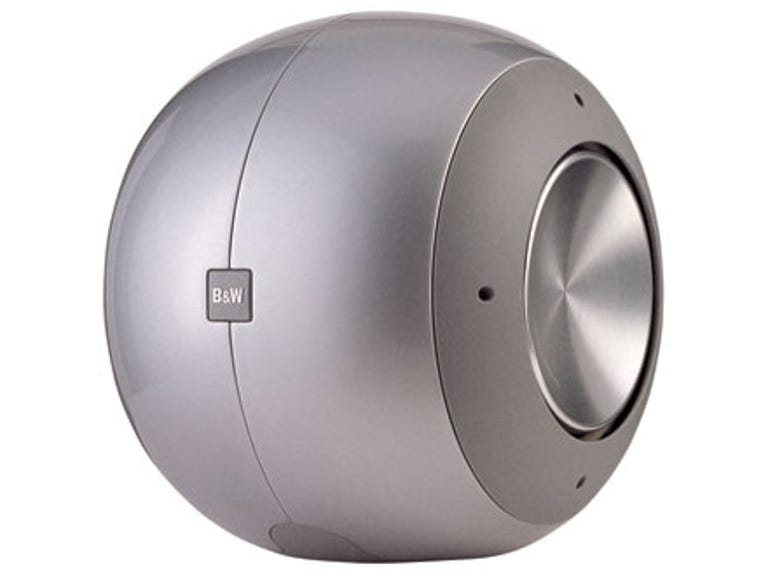 Why You Can Trust CNET
Why You Can Trust CNET Bowers & Wilkins PV1 review: B&W PV1
While the B&W PV1 could be described as a "style" subwoofer, it doesn't compromise on sound quality. Good for movies, great with music.
Perhaps it's because we're cynical, but our eyes make like Krispy Kreme donuts when we hear how nature has inspired the design of another thing that is essentially a hunk of plastic and metal. At least in B&W's case, the company's rationale — "a simple bubble ... is the ideal shape" — is steeped in terms of engineering principals, so it sounds feasible.
The Good
The Bad
The Bottom Line
Cosmetically, most subwoofers are a slow drive through Wrong Town, but in B&W's own words the PV1 has been designed to be "a little less ugly".
The B&W is a closed-box subwoofer which works in a similar way to the Bose desktop speakers we saw recently — two drivers working in a push-pull arrangement in order to reduce unwanted resonance. The drivers themselves are a three-layer laminate of mica cone, expanded polystyrene filler, and an aluminium outer skin. Meanwhile, the enclosure itself is constructed of internally-braced aluminium.
Unfortunately, the unusual shape of the sub means you only get two inputs — the line level input, and, strangely enough, a telephone attachment (RJ11) that uses an adapter from a stereo speaker input.
While two grand may seem like a lot for a subwoofer, the PV1 actually sits in the middle of B&W's subwoofer range. Below it sits the 600 range, while the top-of-the-range 855 will set you back six grand.
While it worked well as part of the VM6 surround kit, we found it worked even better with full-range speakers, filling out the missing bass registers.
If you're looking for trouser-flapping, gut-churning bass, the PV1 isn't for you. While it can go quite deep during the films which require it, it's not a "showy"-sounding piece. It delivered tight, controlled bass effects for Blu-ray action films and Foxtel broadcasts alike.
The PV1's greatest strength was in music — as you'd expect from B&W's musical heritage. For example, we can say we'd never really noticed the sub-bass notes on Andrew Bird's Simple X until we hooked up the PV1. Far from dominating the rest of the spectrum, the B&W gave the song a sturdy foundation for Bird to build his jazzy orchestration upon.
Our only complaint about the PV1 was its incredibly poor documentation, and while the subwoofer offers a number of different switches on the unit, none of them were properly explained. Only with some trial and error were we able to get the best sound out of the unit. But what gutsy sound it was.


